As Alice Springs is the most central town of the whole of Australia, it was always on our wish list to get here, mainly to see just how remote it is, how the people live practically in the middle of a desert, and of course to tick off another box on our Australian 'been there' list. It's situated just over 1400 kilometres inland from Darwin in the north and the same from Adelaide in the south. It's incredible really that it's exactly in the middle. With it being so central it's become a very important place for roads, train lines and telecoms as it connects the vast distance between Darwin and Adelaide.
It's named after the Alice Spring permanent waterhole, near which a staging post for the overland telegraph line was built in the 1870s
. The waterhole was named after Alice Todd, wife of the line's construction manager. The town developed nearby in the 1880s, but with no rail link until 1929 and no surfaced road link until the 1940s, it grew slowly. The huge increase in tourism since the 1970s, however, has brought rapid growth and Alice Springs is now a lively city with around 400,000 visitors a year, many of whom use it as a base from which to tour the surrounding spectacular natural sights.
After our long day on the road, we checked in and were very keen to freshen up and go for beers and food. We were all pretty tired and achy from the Kings Canyon walk so cooking was way out of the question. Luckily our hostel had plenty of food on offer and at reasonable prices so we sat, relaxed, drank, ate and hit the sack by 10pm!
The next day we had quite a full day planned as we were to drive out of the town and explore as many of the surrounding attractions as possible. We managed to visit the West Macdonnell Ranges, which are the surrounding mountains and John Flynn's grave
. John Flynn is the man who invented the air ambulance as he figured out that with the land being so sparse it was easier to take medical care to the injured rather than the injured to the medics. This idea has saved thousands of lives all over Australia and is still used today. To mark his grave a local Aboriginal tribe donated a large round sacred rock to sit on top of where he lays. It's a wonderful looking grave as the rock is so big and round, it's very impressive.
We had a quick look in Simpson's Gap which is a small canyon but there wasn't much to see so we left after just doing a quick 20 minute trek. We went to the Standley Chasm to do another short trek or 2 but as we got there it turned out they charged $10 to enter the area so we quickly turned around and headed for the Glen Helen Homestead and the Mount Sonder look out. The Glen Helen Homestead walk was pretty pointless as it was a short walk along a very pebbly dried out river bed to a small permanent lagoon which the bird wildlife here use as a watering hole
. We were obviously at the wrong time of year as the water level was very low, hence the reason we got to walk down the river bed. Of course, in the rainy season this will be flooded and filled with wildlife. We didn't waste much time here so went just up the road to the Mount Sonder lookout. On our way a very big dingo crossed the road right in front of us, we haven't seen many wild dingoes other than on Fraser Island so it was very exciting. This lookout was pretty impressive though so it made it worthwhile coming all this way as it gave us a brilliant panoramic view over the West Macdonnell range and Mount Sonder itself, there's a 22 kilometre trek you can do over this range and the finish is going to the top of Mount Sonder and down again. Although that sounds quite an experience and must be brilliant to do it actually takes nearly 7 days to complete because of how up and down the terrain is as you go over all the different mountains and canyons. So I think we'll be giving that a miss!
After taking in the view for a while and taking a break from being in the car we then headed off to the final point of interest on this track, the Taylor's Pass lookout
. This was the most incredible stop of them all, not just because Matt got busted having a wee against a tree, but because it looks out for miles over the flat barron land at what looks like a small collection on mountains, which is actually a large crater from a meteor strike thousands of years ago. It's quite amazing how right in the middle of such a flat area that meteor has smashed into it and made a big hole in the ground and forced all the ground up into a ring of mountains. Matt got talking to the guy who caught him having a wee and it turned out you can actually drive down to the crater and do a walk on the inside. He also said it was only 20km away and our car would be alright even though its not a 4x4. Even though we were a bit sceptical it would be brilliant to get on the inside of the crater and have a look so we set off. The road was very bumpy and rocky so the next 25 mins of driving wasn't very pleasant. As we reached the turn off to head into the crater there was a police car and a sign saying 4x4's only
. So we'd driven all that way for nothing. Matt wasn't very amused at all as he was really excited about going inside a meteor crater but it wasn't to be. So we headed back down the terrible unsealed road praying for no damage to the car. Luckily we made it back to normal roads safely so we started our journey back to Alice as we were now a few hours away.
As we headed back we decided to stop at a really quick stop called the Ochre Pits. This was only a 10 minute walk to a place where the aboriginal people used to collect the different colours to make their paint. After the short walk it was easy to see why they came here. There was a big section carved out in the ground and it's strange to see how the rock varies in such different colours. Ochre isn't a very tough rock so they chip away at the walls and break it off then separate the different colours, they then grind the rock down into fine dust and make it into a paint. They still use this rock to make their paints today so there's large fines for anyone caught taking any
.
After an hour or so back on the road, we stopped at another of the stops we'd passed earlier. This was a beautiful natural fresh water lagoon you could swim in called Ellery Creek Bighole. It's a lovely place with high rock walls and lots of bird wildlife. We had missed our chance really though for a swim as it had been lovely and sunny earlier but the sun was going down and it was all shaded by the canyon walls. It was still lovely to see and I can see why people would enjoy swimming here, we paddled in the water but the water felt pretty cold so we headed back to Alice for the night as we had yet another long day ahead tomorrow and we were all pretty worn out.
We'd changed hostels today and, to our surprise, when we'd managed to get a private 3 bed room it actually turned out to be a caravan with 3 beds in! I suppose they weren't lying but even still it wasn't quite what we were expecting! It wasn't a problem though as the hostel was alright and even though it was a caravan it was still cozy and we were only sleeping in it for one night, besides we have stayed in far worse places and survived!
The next morning we got up early so we could have a quick look round Alice itself in a do it yourself driving tour and grabbed a few souvenirs. Once we'd done this there's a brilliant look out over the whole town from the Anzac Hill so we headed there. It was a brilliant way to see the town and how big it actually is. From where you stand as well you get to look right down the main road out of the town which goes straight to the mountains and through a small gap between 2 different ones. It's like it's there own little gateway in and out created by the mountains. It looks beautiful!
Unfortunately then we had the task of driving 1400km back to Adelaide! Of course we were never going to do it all in one trip so nearly 8 hours away was our next stop Coober Pedy!
The centre of Oz!
Monday, March 18, 2013
 Alice Springs, Northern Territory, Australia
Alice Springs, Northern Territory, Australia
Other Entries
-
41Hurley - an Ironman or Ironwoman of the future?!
Jan 1166 days prior Nelson Bay, Australiaphoto_camera12videocam 0comment 0
Nelson Bay, Australiaphoto_camera12videocam 0comment 0 -
42A Nice reunion!
Jan 1364 days prior Sydney, Australiaphoto_camera34videocam 0comment 0
Sydney, Australiaphoto_camera34videocam 0comment 0 -
43Storms, Sky Towers & Straya Day!
Jan 1958 days prior Manly, Australiaphoto_camera35videocam 0comment 0
Manly, Australiaphoto_camera35videocam 0comment 0 -
44Go West, life is CRAZY there!!
Jan 3146 days prior Perth, Australiaphoto_camera12videocam 0comment 0
Perth, Australiaphoto_camera12videocam 0comment 0 -
45Off on another road trip!
Feb 0541 days prior Walpole, Australiaphoto_camera5videocam 0comment 0
Walpole, Australiaphoto_camera5videocam 0comment 0 -
46Antarctic rocks in Australia?!
Feb 0640 days prior Albany, Australiaphoto_camera20videocam 0comment 0
Albany, Australiaphoto_camera20videocam 0comment 0 -
47Our mini break in Paradise
Feb 0739 days prior Esperance, Australiaphoto_camera17videocam 0comment 0
Esperance, Australiaphoto_camera17videocam 0comment 0 -
48The biggest wave we will ever surf!
Feb 1036 days prior Hyden, Australiaphoto_camera7videocam 0comment 0
Hyden, Australiaphoto_camera7videocam 0comment 0 -
49Our first fry up!!!!!
Feb 1135 days prior Perth, Australiaphoto_camera16videocam 0comment 0
Perth, Australiaphoto_camera16videocam 0comment 0 -
50Wine, wine & more wine! A perfect weekend!
Feb 1531 days prior Margaret River, Australiaphoto_camera23videocam 0comment 0
Margaret River, Australiaphoto_camera23videocam 0comment 0 -
51Matt becomes a proper grown up!!!
Feb 1729 days prior Perth, Australiaphoto_camera32videocam 0comment 0
Perth, Australiaphoto_camera32videocam 0comment 0 -
52The Indian Pacific - Part 1
Feb 2422 days prior Kalgoorlie, Australiaphoto_camera15videocam 0comment 0
Kalgoorlie, Australiaphoto_camera15videocam 0comment 0 -
53The Indian Pacific - Part 2
Feb 2521 days prior Port Augusta, Australiaphoto_camera17videocam 0comment 0
Port Augusta, Australiaphoto_camera17videocam 0comment 0 -
54West Coast Beagles Rule!
Feb 2620 days prior Adelaide, Australiaphoto_camera59videocam 0comment 0
Adelaide, Australiaphoto_camera59videocam 0comment 0 -
55Off on another crazy road trip!
Mar 153 days prior Finke, Australiaphoto_camera6videocam 0comment 0
Finke, Australiaphoto_camera6videocam 0comment 0 -
56The Red Centre!
Mar 162 days prior Uluru-Kata Tjuta National Park, Australiaphoto_camera15videocam 0comment 0
Uluru-Kata Tjuta National Park, Australiaphoto_camera15videocam 0comment 0 -
57Not more trekking!!!
Mar 171 day prior Kings Canyon, Australiaphoto_camera10videocam 0comment 0
Kings Canyon, Australiaphoto_camera10videocam 0comment 0 -
58The centre of Oz!
Mar 18 Alice Springs, Australiaphoto_camera14videocam 0comment 0
Alice Springs, Australiaphoto_camera14videocam 0comment 0 -
59Let's get noodling!
Mar 202 days later Coober Pedy, Australiaphoto_camera22videocam 0comment 0
Coober Pedy, Australiaphoto_camera22videocam 0comment 0 -
60Nearly 'home'!!
Mar 213 days later Port Augusta, Australiaphoto_camera2videocam 0comment 0
Port Augusta, Australiaphoto_camera2videocam 0comment 0 -
61So many reasons to celebrate!!
Mar 224 days later Glenelg, Australiaphoto_camera36videocam 0comment 0
Glenelg, Australiaphoto_camera36videocam 0comment 0 -
62Climbing silks, hoops and bridges!
Apr 0215 days later Sydney, Australiaphoto_camera55videocam 0comment 0
Sydney, Australiaphoto_camera55videocam 0comment 0 -
63Norfolk how it should be!
Apr 0518 days later Norfolk Island, Norfolk Islandphoto_camera77videocam 1comment 0
Norfolk Island, Norfolk Islandphoto_camera77videocam 1comment 0 -
64Back to reality!
Apr 1528 days later Sydney, Australiaphoto_camera0videocam 0comment 0
Sydney, Australiaphoto_camera0videocam 0comment 0 -
65Our first Aussie brawl!
Apr 1629 days later Glenelg, Australiaphoto_camera24videocam 0comment 0
Glenelg, Australiaphoto_camera24videocam 0comment 0 -
66Where ya wheelie bin?!?!
Apr 2942 days later Orange, Australiaphoto_camera24videocam 0comment 0
Orange, Australiaphoto_camera24videocam 0comment 0 -
67Farewell Sydney, for now!!
May 1861 days later Sydney, Australiaphoto_camera5videocam 0comment 0
Sydney, Australiaphoto_camera5videocam 0comment 0 -
68The land of the long white cloud!
May 2063 days later Christchurch, New Zealandphoto_camera1videocam 0comment 0
Christchurch, New Zealandphoto_camera1videocam 0comment 0 -
69It's all a bit fishy!
May 2164 days later Kaikoura, New Zealandphoto_camera6videocam 0comment 0
Kaikoura, New Zealandphoto_camera6videocam 0comment 0 -
70We are family!
May 2265 days later Picton, New Zealandphoto_camera17videocam 2comment 0
Picton, New Zealandphoto_camera17videocam 2comment 0 -
71What's your forte?
May 2366 days later Abel Tasman National Park, New Zealandphoto_camera48videocam 0comment 2
Abel Tasman National Park, New Zealandphoto_camera48videocam 0comment 2 -
72No wonder the Hiltons got angry!!
May 2568 days later Punakaiki, New Zealandphoto_camera16videocam 0comment 0
Punakaiki, New Zealandphoto_camera16videocam 0comment 0 -
73Becoming Ice Explorers!
May 2669 days later Franz Josef, New Zealandphoto_camera49videocam 0comment 0
Franz Josef, New Zealandphoto_camera49videocam 0comment 0 -
74Matt leaps out of a plane!
May 2871 days later Wanaka, New Zealandphoto_camera40videocam 2comment 0
Wanaka, New Zealandphoto_camera40videocam 2comment 0 -
75Time to party NZ style!!
May 2972 days later Queenstown, New Zealandphoto_camera44videocam 0comment 0
Queenstown, New Zealandphoto_camera44videocam 0comment 0 -
76There's a mountain behind there somewhere, honest!
Jun 0276 days later Aoraki Mount Cook National Park, New Zealandphoto_camera4videocam 0comment 0
Aoraki Mount Cook National Park, New Zealandphoto_camera4videocam 0comment 0

 Alice Springs, Northern Territory, Australia
Alice Springs, Northern Territory, Australia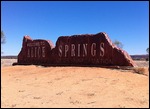
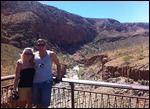
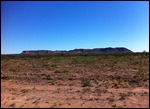
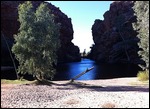
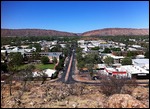
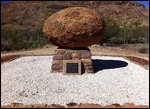



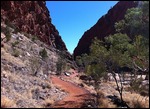
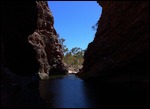
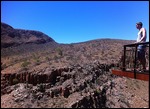

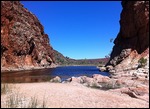
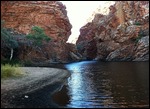
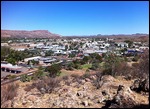
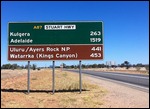
2025-05-23